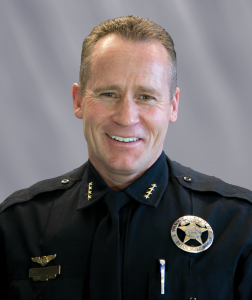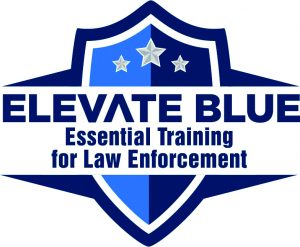
Park City Police Department, Utah
College campuses have long been central sites for debate and action on a variety of social causes. While protests, mass demonstrations, and rallies are not new issues for police, the ways we respond to them are always evolving.
The recent rise in campus protests and encampments have reignited conversations around the role of police on university grounds and the complex balance of maintaining order while respecting and upholding civil rights.
As police leaders and policing professionals, we are supportive of individuals wishing to exercise their First Amendment rights through lawful demonstrations. When civil disturbances occur that pose a threat of collective violence, destruction of property, or other unlawful acts, that is when we must respond with crowd control measures to prevent loss of life, injury, or property damage.
As we all have witnessed these past few months with the protests and encampments on college campuses, peaceful demonstrations can spawn protests and counterprotests that can lead to civil disorder. We’ve seen these protests spread throughout college campuses and social media being used as a tool to mobilize and manage participants prior to and during demonstrations. In many cases, these student protests are joined by individuals who are not affiliated with the institution, bringing with them attitudes and goals that may be outside the originally intended scope, which can further contribute to unrest at these events. Additionally, protesters often learn tactics from other groups or the outsiders that join their protests, so illegal behavior can quickly spread within a protest and across the world.
Adding further complexity, in terms of protests at universities and colleges, there is often a different dynamic depending on whether the institutions are private or public, if they have their own police agencies, and if a memorandum of understanding or mutual aid agreement with local or neighboring agencies is already in place.
As with all situations, communication and coordination are key. While universities and colleges have acknowledged the students’ right to protest and exercise free speech, many times they do not always establish clear ground rules with protesters, which in some cases has allowed the demonstrations to spin out of control. The standard best practice in policing is to make it clear to protesters that, if they are violating the rules, they are outside the bounds of their protected free speech. This level of communication is paramount before and throughout the event.
If [protesters] are violating the rules, they are outside the bounds of their protected free speech.
In response to large, cause-motivated gatherings, a more recent development in many police agencies is the establishment of specialized public order units, trained in crowd management and safely de-escalating civil disorder. Depending on agency size, this is not always feasible, which is why many of our agencies rely on cross-agency partnerships and mutual aid agreements to provide additional support and resources during large-scale events or protests.
One tactic agencies find successful during large-scale events and mass demonstrations is the inclusion of a prosecutor or other member of the judicial system in their command center. An individual with legal expertise can help provide real-time feedback on approaches to ensure the appropriate tactical response.
As I said earlier, communication is paramount to success and that includes communications not only with the protestors but also with the media. Following an event, providing media outlets with video from body-worn cameras or fixed surveillance systems in the area can provide a more transparent account of the events that took place and strengthen trust in police operations. It is important to keep in mind that records of incidents such as these may be accessible through the United States Freedom of Information Act or similar statutes. If units are well prepared and rely on their training, it helps minimize the risk to agencies and communities.
Preparing for, managing, and responding to demonstrations and protests can be complex. To aid you and your agencies, IACP has recently launched a no-cost online training through Elevate Blue: Essential Training for Law Enforcement on Managing Mass Demonstrations and Protecting Civil Liberties. We are proud to announce that this course is certified by the IADLEST National Training Certification Program and meets or exceeds the quality standards set by most individual state POST certification requirements.
 Access IACP’s no-cost online training, Elevate Blue: Essential Training for Law Enforcement on Managing Mass Demonstrations and Protecting Civil Liberties, on IACPlearn: learn.theIACP.org/products/elevate-blue. Access IACP’s no-cost online training, Elevate Blue: Essential Training for Law Enforcement on Managing Mass Demonstrations and Protecting Civil Liberties, on IACPlearn: learn.theIACP.org/products/elevate-blue. |
This newly developed course will focus on how to engage and communicate effectively, interpret behavior, and respond appropriately, while providing insight on crowd dynamics, mass arrests, and plans of action for responses to mass demonstrations. Additional course elements emphasize the importance of understanding civil liberties and protected speech, characteristics of a mass demonstration, de-escalation skills, and officer well-being.
In addition to this Elevate Blue course, there are also a wide range of resources available, including model policies, guidelines, video training, and after-action assessments from other agencies that can be extremely beneficial to learn from. IACP has compiled many of these resources for you, to aid you and your agencies as you navigate these events. They can be found at theIACP.org/news/blog-post/crowd-management-and-civil-demonstrations-resources.
I encourage you and your agencies to take advantage of these opportunities, which will help contribute to enhanced community trust.d
Please cite as:
Wade Carpenter, “Safety and Civil Rights at Mass Demonstrations,” President’s Message, Police Chief 91, no. 7 (July 2024): 6–7.


